Study on Smoke Leakage Performance of Suspended Ceiling System
Abstract
:1. Introduction
2. Experimental Plan
2.1. Experimental Apparatus
2.2. Experimental Samples
2.3. Experimental Procedure
- Actual leakage of the test specimens under gas standard condition (m3/h);
- Actual leakage of the test specimen at temperature (T + 273.15) and pressure (Pa + Pm) (m3/h);
- Leakage of the test chamber itself (m3/h);
- Leakage of the test specimen and the test chamber itself (m3/h)
- k Constant (2.89 × 10−3);
- T Air temperature (°C);
- Pa Atmospheric pressure (Pa);
- Pm Pressure added-value (Pa);
- Relative humidity (%);
- Saturation vapor pressure (Pa);
- Second: Leakage measurement of specimens.
- Step 1:
- Measure the leakage of the test chamber itself.
- Step 2:
- After the test specimen is loaded, measure the leakage between the test specimen and the test chamber itself.
- Step 3:
- The actual leakage of the test specimen is obtained by subtracting the value in Step 2 from the value in Step 1:
- Step 4:
- Convert the value obtained from step 3 to the leakage volume at the gas standard condition (temperature 20 °C (293.15 K) and standard 1 atmospheric pressure (101,325 Pa)).
3. Results and Discussion
3.1. Basic Leakage of Apparatus
- log: Logarithm to base 10
- e*: Saturated vapor pressure of water (hPa)
- T: Absolute temperature in Kelvin (K)
- Tst: Boiling point temperature (373.15 K)
- e*st: Boiling point pressure (1 atm = 1013.25 hPa)
3.2. Leakage of Each Ceiling Material
- Type 1:
- Test 9 mm gypsum board, as shown in Figure 4, apply adhesive tape to ceiling crack outside ceiling panel no. 5 to obtain leakage of ceiling no. 5 (No. A5). The average leakage volume of A1, A2, A3, A4, A6, A7, A8, and A9. A10 being the grand average leakage volume from all the ceiling panels.
- Type 2:
- Test 15 mm-thick glass-fiber panels, taking the average leakage from each ceiling panel according to sequence, to obtain the average leakage from each ceiling panel number B1, B2, B3, B4, B5, B6, B7, B8, and B9. B10 being the grand average leakage volume from all the ceiling panels.
- Type 3:
- Test the 3.5 mm-thick calcium silicate board, taking the average leakage from each ceiling panel according to sequence, to obtain the average leakage from each ceiling panel number C1, C2, C3, C4, C5, C6, C7, C8, and C9. C10 is the total average leakage volume from all the ceiling panels.
3.3. Analysis and Application
- C: Flowability coefficient
- A: Crack area (m2)
- : Differential pressure (Pa)
- : Air density (kg/m3)
4. Conclusions
- (1)
- Different ceiling materials, even with the same ceiling size, produce different leakage rates, which is caused by the varying degrees of bending bursting strength. When the pressure difference is 10 Pa, 25 Pa, and 50 Pa, the maximum leakage is A panel, the minimum leakage is B panel.
- (2)
- When the ceiling material is the same and the ceiling size is different, the leakage volume of the panel size 300 × 603 mm is the largest. It is not the direct relationship of the larger the size of the panel, the greater the leakage, but the smallest leakage volume caused by the largest panel. This phenomenon applies to all three panels, whether A, B, or C, having this regularity.
- (3)
- Recommendations for leakage assessment of the ceiling as a whole can be found in Table 2 when the panel size is less than 300 × 300 mm and between 300 × 300 mm and 300 × 603 mm, substituting different estimation values need to be used to obtain more accurate smoke leakage rate per length, and when the panel size is 603 × 603 mm, the leakage volume can be directly applied.
- (4)
- This study also presents a leakage rate assessment table for entire ceiling panels, which will provide future calculations of the smoke leakage rate of the non-flame room, which can be extrapolated to assess the time of smoke decline and conducive for evacuation design.
- (5)
- The majority of residents who live in places like long-term care institutions are people with disabilities. Considering that mass evacuation of residents may be difficult with limited caregivers, currently these institutions have opted to take shelter in place, supplemented by horizontal evacuation, and lastly vertical evacuation. Therefore, it is recommended that each ward forms a fire safety compartment, protecting residents from the impact of the flame and smoke. Through the study of smoke leakage volume of ceilings, emphasis must be placed on the smoke insulation function of ceilings so as to buy more time when seeking shelter.
Author Contributions
Funding
Conflicts of Interest
References
- Clarke, F.B. Physiological effects of smoke: Managing escape. ASHRAE J. 1997, 39, 47–56. [Google Scholar]
- Klote, J.H. Smoke Control, SFPE Handbook of Fire Protection Engineering; National Fire Protection Association: Quincy, MA, USA, 1995; Chapter 12, Section 4; pp. 230–245. [Google Scholar]
- CNS 15038. Method of Test for Evaluating Smoke Control Performance of Doors; Bureau of Standard, Metrology and Inspection (BSMI): Taipei, Taiwan, 2009. [Google Scholar]
- ISO 5925-1. Fire Test-Evaluation of Performance of Smoke Control Door Assemblies—Part 1: Ambient Temperature Test; International Organization for Standardization (ISO): Geneva, Switzerland, 2007. [Google Scholar]
- ISO 5925-2. Fire Test-Smoke Control Door and Shutter Assemblies—Part 2: Commentary on Test Method and Test Data Application; International Organization for Standardization (ISO): Geneva, Switzerland, 2006. [Google Scholar]
- JIS A 1516. Windows and Doorsets—Air Permeability Test; Japanese Industrial Standards: Tokyo, Japan, 1998. [Google Scholar]
- BS 476-31. Methods for Measuring Smoke Penetration through Door Sets and Shutter Assemblies; British Standards Institution (BSI): London, UK, 1983. [Google Scholar]
- DIN 18095-1. Smoke Control Doors; Concepts and Requirements; German National Standard: Berlin, Germany, 1998. [Google Scholar]
- DIN 18095-2. Smoke Control Doors; Type Testing for Durability and Leakage; German National Standard: Berlin, Germany, 1991. [Google Scholar]
- UL 1784. Air Leakage Tests of Door Assemblies; Underwriters Laboratories Inc. (UL): Northbrook, IL, USA, 1990. [Google Scholar]
- ASTM E283. Standard Test Method for Determining Rate of Air Leakage through Exterior Windows, Curtain Walls, and Doors under Specified Pressure Differences across the Specimen; American Society for Testing and Materials (ASTM): West Conshohocken, PA, USA, 2004. [Google Scholar]
- Chuang, Y.-H.; Chuang, Y.-J.; Lin, C.-Y. Using a new testing method to measure smoke leakage of existing doors. J. Appl. Fire Sci. 2006, 16, 21–33. [Google Scholar] [CrossRef]
- Kuo, S.-Y. Study on application and development of a movable smoke leakage test apparatus across building opening assemblies. J. Appl. Fire Sci. 2013, 23, 307–317. [Google Scholar] [CrossRef]
- Chuang, Y.-J.; Tsai, T.-H.; Chuang, Y.-H.; Lin, C.-Y.; Huang, C.-H.; Chen, P.-H. Performance assessment of single-leaf timber door in a smoke leakage test. J. Appl. Fire Sci. 2006, 16, 101–114. [Google Scholar] [CrossRef]
- Lin, P.-J.; Mo, H.-C.; Chiou, C.-W.; Chuang, Y.-H.; Huang, C.-H.; Tang, C.-H.; Chuang, Y.-J.; Lin, C.-Y. Study on the smoke control performance of elevator doors. J. Appl. Fire Sci. 2008, 18, 309–316. [Google Scholar] [CrossRef]
- Tsai, T.-H.; Kuo, S.-Y.; Tseng, Y.-T.; Tang, C.-H.; Chuang, Y.-J.; Lin, C.-Y. Rates of smoke leakage through fire stops. J. Eng. Res. 2013, 1, 231–250. [Google Scholar]
- Klote, J.H. Smoke Movement through a Suspended Ceiling System; NBSIR-81-2444; Center for Fire Research, National Bureau of Standards, NIST Interagency: Washington, DC, USA, 1982.
- Goff, J.A.; Gratch, S. Low-pressure properties of water from −160 to 212 °F. Trans. Am. Soc. Heat. Vent. Eng. 1946, 52, 95–122. [Google Scholar]
- Parekh, P.S. Beyond air leaks—How to do compressed air systems Analysis? Energy Eng. 1998, 95, 7–29. [Google Scholar] [CrossRef]
- CNS 4458. Gypsum Boards; Bureau of Standard, Metrology and Inspection (BSMI): Taipei, Taiwan, 2017. [Google Scholar]
- Hewitt, P.G. Bernoulli’s principle understanding bernoulli’s principle as it applies to aerodynamic lift. Natl. Sci. Teach. Assoc. 2004, 71, 51–55. [Google Scholar]
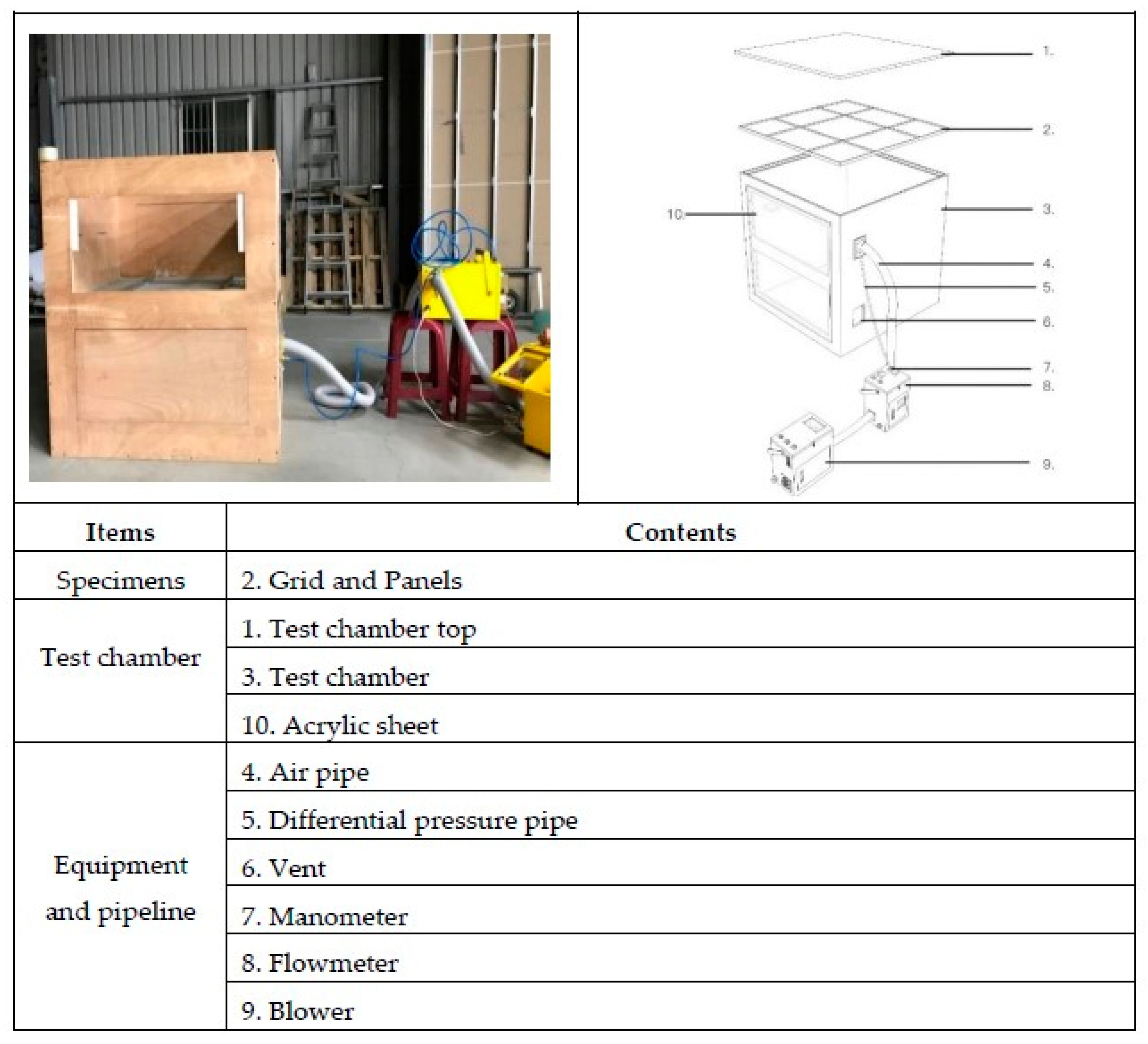
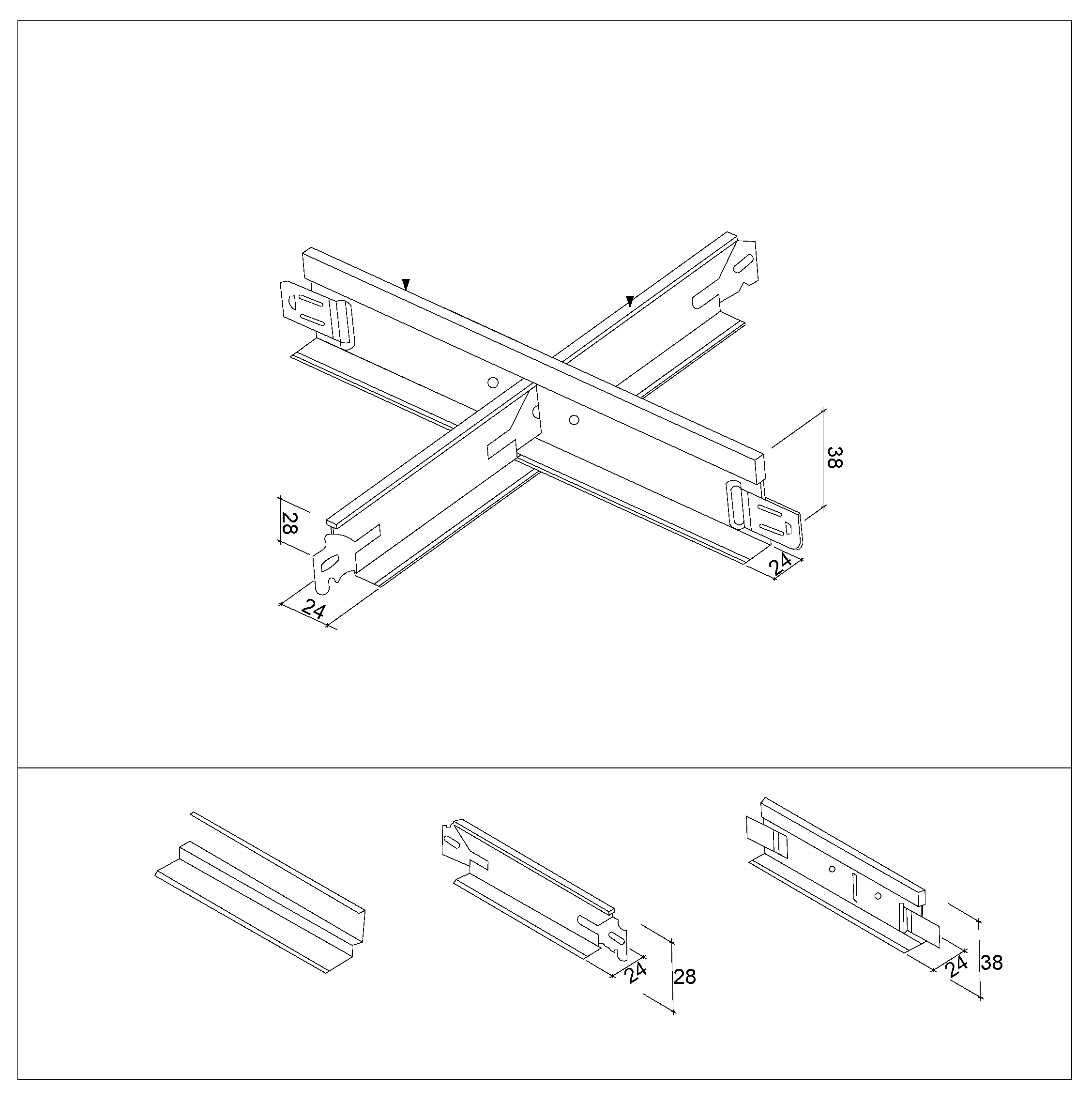
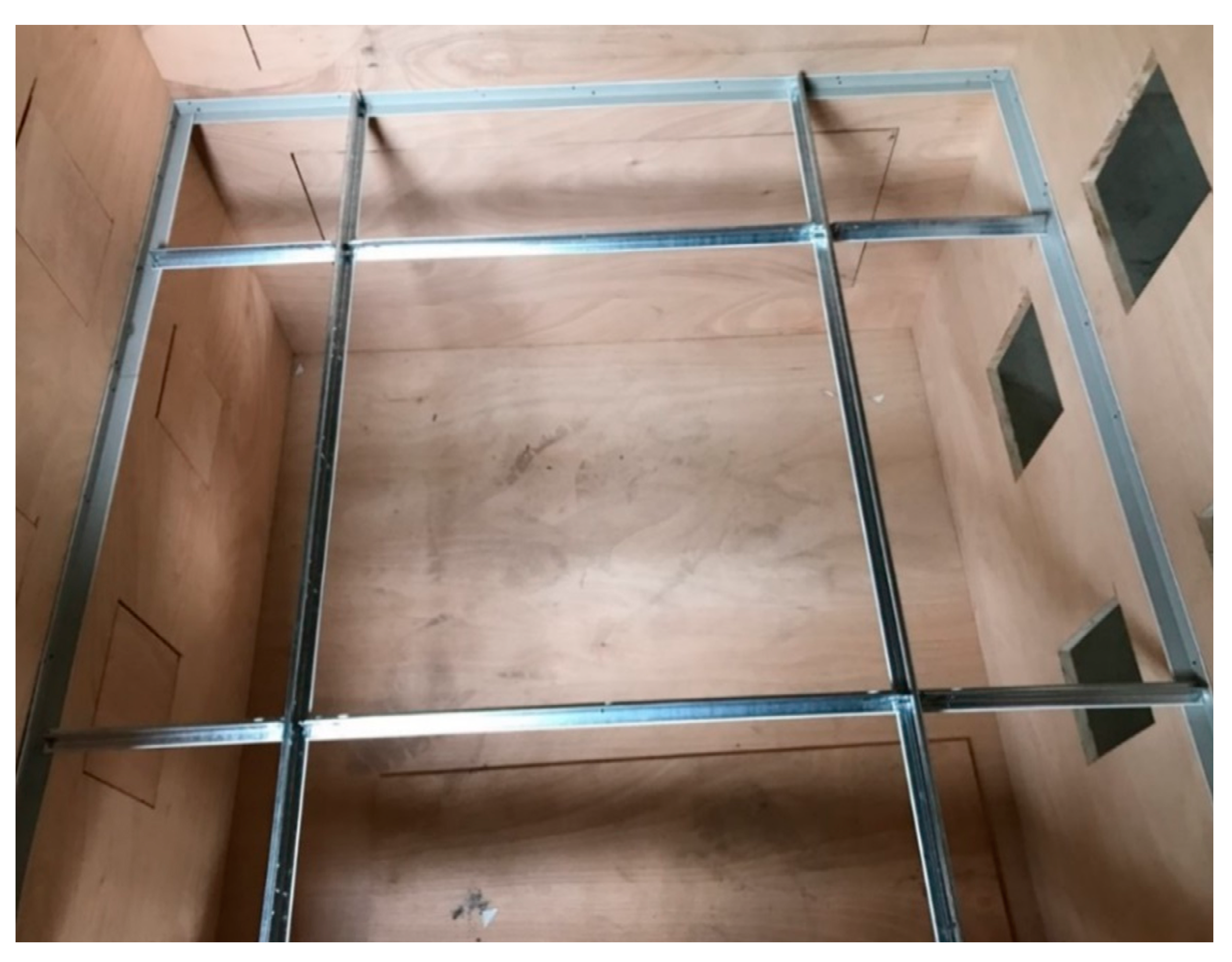
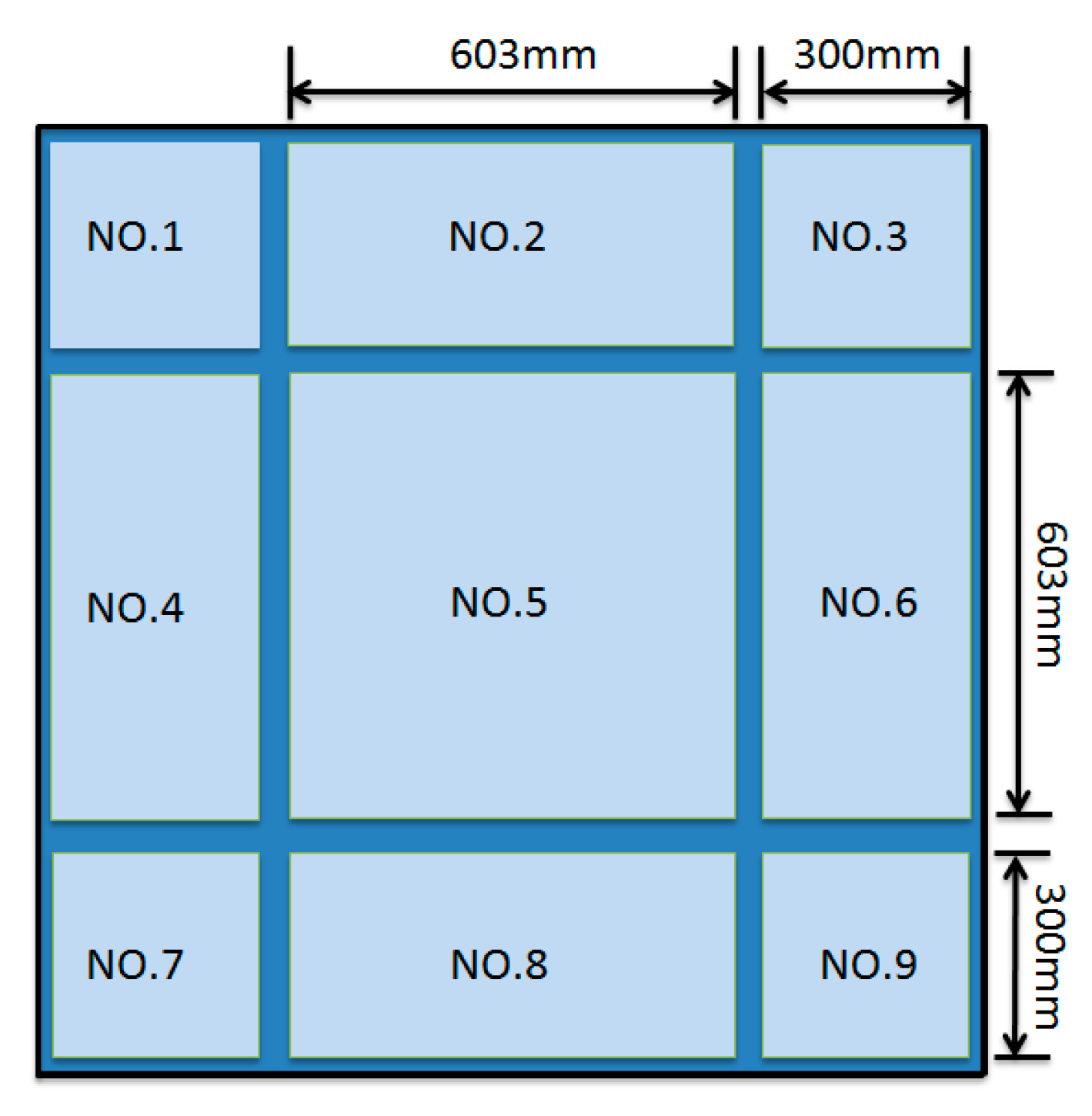
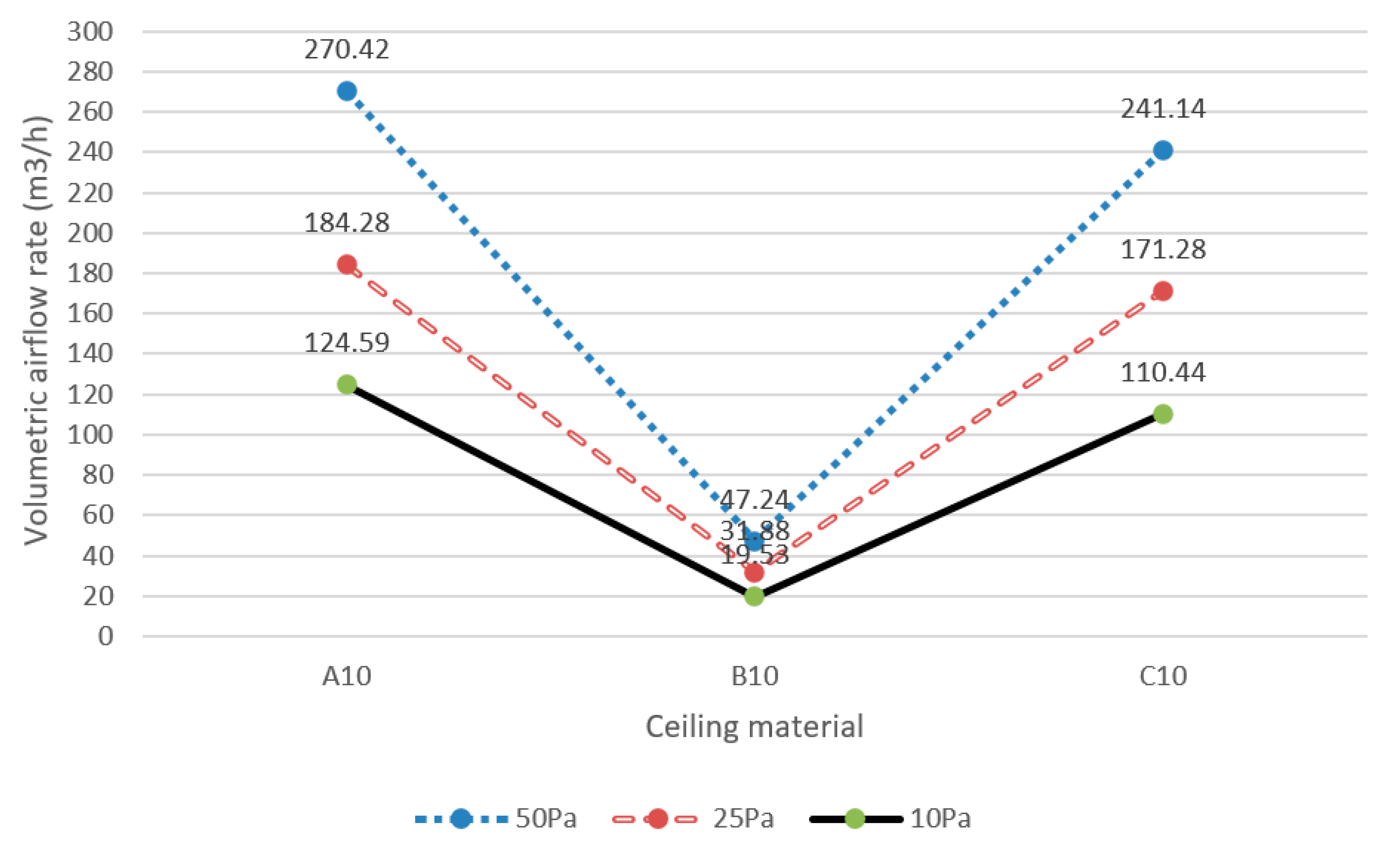
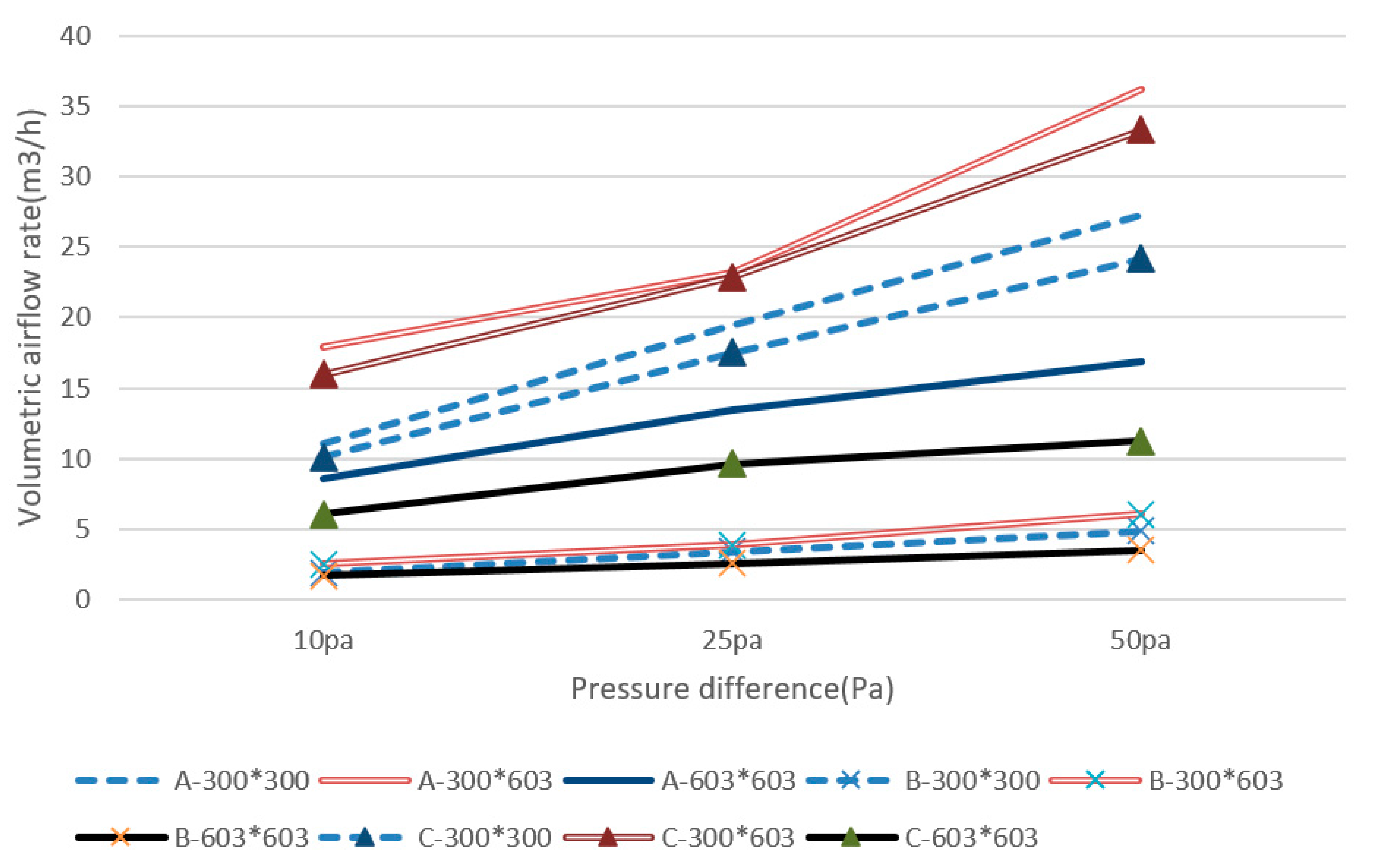
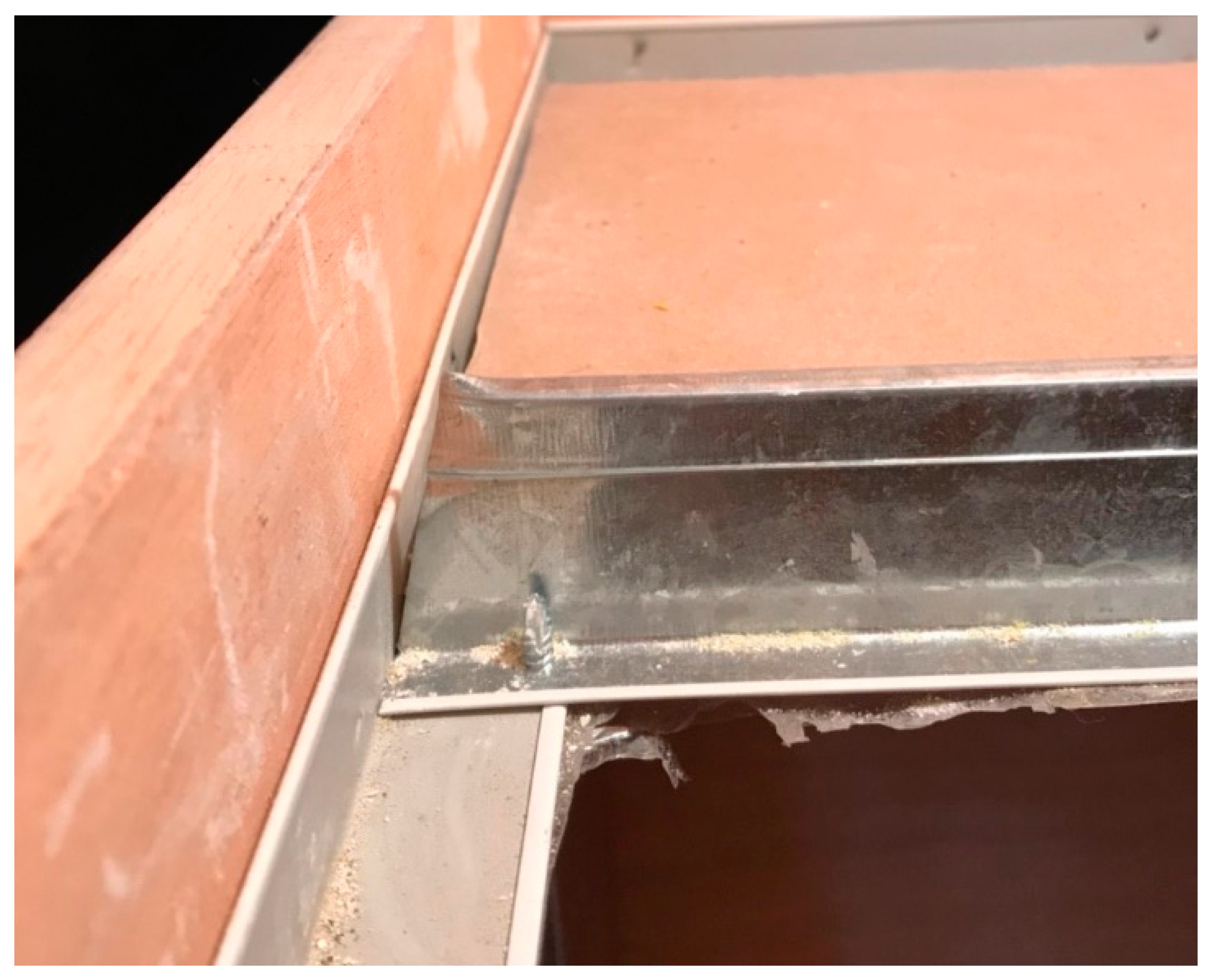
| Specimen Pressure Difference | 9 mm Gypsum Board Number A | 15 mm Glass-Fiber Board Number B | 3.5 mm Calcium Silicate Board Number C | |||
|---|---|---|---|---|---|---|
| 10 Pa | A1 | 11.01 | B1 | 1.89 | C1 | 10.11 |
| A2 | 17.92 | B2 | 2.52 | C2 | 16.02 | |
| A3 | 11.10 | B3 | 1.90 | C3 | 10.01 | |
| A4 | 17.95 | B4 | 2.48 | C4 | 15.98 | |
| A5 | 8.54 | B5 | 1.72 | C5 | 6.09 | |
| A6 | 17.85 | B6 | 2.61 | C6 | 16.00 | |
| A7 | 11.15 | B7 | 1.99 | C7 | 10.12 | |
| A8 | 17.86 | B8 | 2.50 | C8 | 15.99 | |
| A9 | 11.21 | B9 | 1.92 | C9 | 10.12 | |
| (A1 + A3 + A7 + A9)/4 | 11.12 | (B1 + B3 + B7 + B9)/4 | 1.93 | (C1 + C3 + C7 + C9)/4 | 10.09 | |
| (A2 + A4 + A6 + A6)/4 | 17.90 | (B2 + B4 + B6 + B6)/4 | 2.53 | (C2 + C4 + C6 + C6)/4 | 16.00 | |
| A10 | 124.59 | B10 | 19.53 | C10 | 110.44 | |
| 25 Pa | A1 | 19.44 | B1 | 3.42 | C1 | 17.56 |
| A2 | 23.08 | B2 | 3.97 | C2 | 22.92 | |
| A3 | 19.50 | B3 | 3.33 | C3 | 17.25 | |
| A4 | 23.12 | B4 | 3.82 | C4 | 22.88 | |
| A5 | 13.45 | B5 | 2.59 | C5 | 9.67 | |
| A6 | 23.20 | B6 | 3.98 | C6 | 22.98 | |
| A7 | 19.59 | B7 | 3.55 | C7 | 17.45 | |
| A8 | 23.45 | B8 | 3.78 | C8 | 22.78 | |
| A9 | 19.45 | B9 | 3.44 | C9 | 17.79 | |
| (A1 + A3 + A7 + A9)/4 | 19.50 | (B1 + B3 + B7 + B9)/4 | 3.44 | (C1 + C3 + C7 + C9)/4 | 17.51 | |
| (A2 + A4 + A6 + A6)/4 | 23.21 | (B2 + B4 + B6 + B6)/4 | 3.89 | (C2 + C4 + C6 + C6)/4 | 22.89 | |
| A10 | 184.28 | B10 | 31.88 | C10 | 171.28 | |
| 50 Pa | A1 | 27.41 | B1 | 4.98 | C1 | 24.12 |
| A2 | 36.20 | B2 | 5.97 | C2 | 33.21 | |
| A3 | 27.50 | B3 | 4.97 | C3 | 24.25 | |
| A4 | 36.21 | B4 | 6.25 | C4 | 33.51 | |
| A5 | 16.88 | B5 | 3.51 | C5 | 11.25 | |
| A6 | 36.01 | B6 | 6.15 | C6 | 33.45 | |
| A7 | 27.01 | B7 | 4.78 | C7 | 24.22 | |
| A8 | 36.09 | B8 | 5.88 | C8 | 33.12 | |
| A9 | 27.11 | B9 | 4.75 | C9 | 24.01 | |
| (A1 + A3 + A7 + A9)/4 | 27.26 | (B1 + B3 + B7 + B9)/4 | 4.87 | (C1 + C3 + C7 + C9)/4 | 24.15 | |
| (A2 + A4 + A6 + A6)/4 | 36.13 | (B2 + B4 + B6 + B6)/4 | 6.06 | (C2 + C4 + C6 + C6)/4 | 33.32 | |
| A10 | 270.42 | B10 | 47.24 | C10 | 241.14 | |
| Specimen Pressure Difference Size | 9 mm Gypsum Board | 15 mm Glass-Fiber Board | 3.5 mm Calcium Silicate Board | ||||||
|---|---|---|---|---|---|---|---|---|---|
| 10 Pa | 25 Pa | 50 Pa | 10 Pa | 25 Pa | 50 Pa | 10 Pa | 25 Pa | 50 Pa | |
| Each 603 × 603 (mm) | 8.54 | 13.45 | 16.88 | 1.72 | 2.59 | 3.51 | 6.09 | 9.67 | 11.25 |
| (m3/h) | (m3/h) | (m3/h) | |||||||
| 300 × 300 or less (mm) | 9.27 | 16.25 | 22.72 | 1.61 | 2.87 | 4.06 | 8.41 | 14.59 | 20.13 |
| (m3/(h·m)) | (m3/(h·m)) | (m3/(h·m)) | |||||||
| 300 × 603 ~ 603 × 603 (mm) | 9.91 | 12.85 | 20.01 | 1.40 | 2.15 | 3.36 | 8.86 | 12.67 | 18.45 |
| (m3/(h·m)) | (m3/(h·m)) | (m3/(h·m)) | |||||||
© 2020 by the authors. Licensee MDPI, Basel, Switzerland. This article is an open access article distributed under the terms and conditions of the Creative Commons Attribution (CC BY) license (http://creativecommons.org/licenses/by/4.0/).
Share and Cite
Chou, T.-L.; Tang, C.-H.; Chuang, Y.-J.; Lin, C.-Y. Study on Smoke Leakage Performance of Suspended Ceiling System. Sustainability 2020, 12, 7244. https://doi.org/10.3390/su12187244
Chou T-L, Tang C-H, Chuang Y-J, Lin C-Y. Study on Smoke Leakage Performance of Suspended Ceiling System. Sustainability. 2020; 12(18):7244. https://doi.org/10.3390/su12187244
Chicago/Turabian StyleChou, Tien-Lun, Chieh-Hsin Tang, Ying-Ji Chuang, and Ching-Yuan Lin. 2020. "Study on Smoke Leakage Performance of Suspended Ceiling System" Sustainability 12, no. 18: 7244. https://doi.org/10.3390/su12187244
APA StyleChou, T.-L., Tang, C.-H., Chuang, Y.-J., & Lin, C.-Y. (2020). Study on Smoke Leakage Performance of Suspended Ceiling System. Sustainability, 12(18), 7244. https://doi.org/10.3390/su12187244




